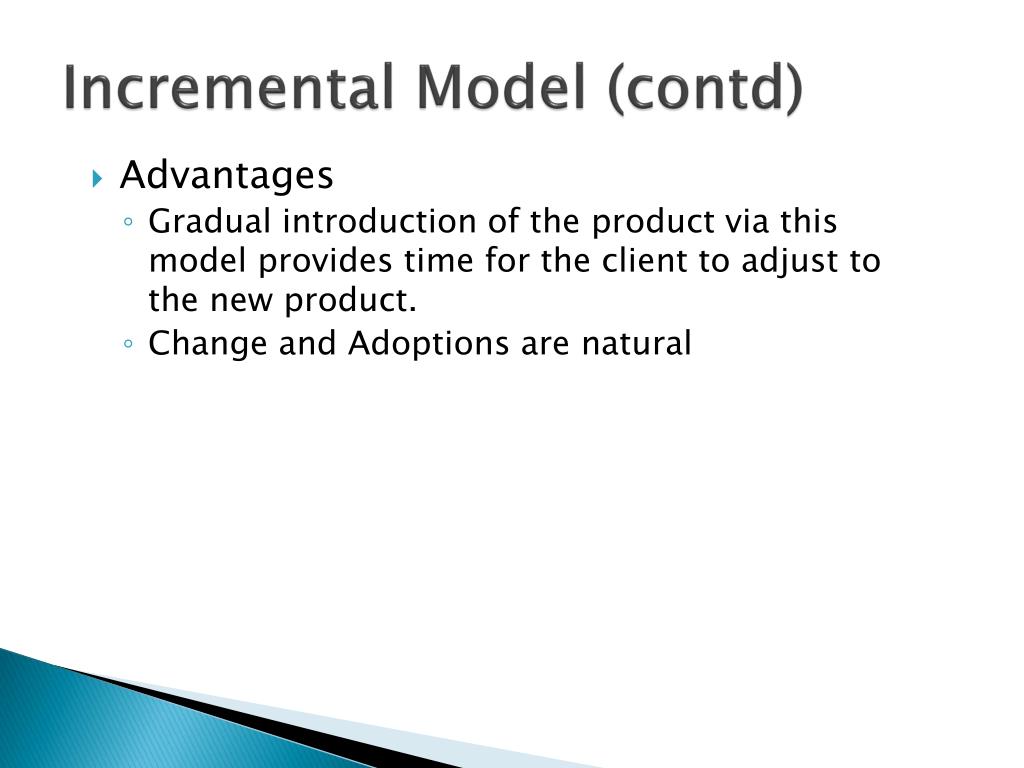

- #CONCURRENT DEVELOPMENT MODEL ADVANTAGES AND DISADVANTAGES MANUAL#
- #CONCURRENT DEVELOPMENT MODEL ADVANTAGES AND DISADVANTAGES ANDROID#
- #CONCURRENT DEVELOPMENT MODEL ADVANTAGES AND DISADVANTAGES SOFTWARE#
- #CONCURRENT DEVELOPMENT MODEL ADVANTAGES AND DISADVANTAGES CODE#
Your flow must account for a developer who needs to make an urgent change and get it all the way through your process and into production while still aligning with your typical development workflow. Emergency hotfixesĪn emergency hotfix is when a particular incident or issue has been expedited to deal with some emergent situation, normally bug fixes.

Since this flow will be used the most frequently, your strategy here must ensure proper coordination among the developers and support all relevant policies such as automated testing, pull requests, and deployments. These changes are ordinary in terms of size and complexity for your codebase and, generally, will make up the bulk of all the changes your developers make. The typical day-to-day flow includes normal changes that developers make to the code, changes that do not bring any heightened sense of urgency.

Here are some common use cases to consider when devising a branching strategy.
#CONCURRENT DEVELOPMENT MODEL ADVANTAGES AND DISADVANTAGES SOFTWARE#
The right strategy enhances collaboration, efficiency, and accuracy in the software delivery process, while the wrong strategy (or no strategy) leads to hours of lost effort. Why you need a branching strategyĪ branching strategy ensures everyone on the team is following the same process for making changes to source control. Then, we’ll compare those to trunk-based development to learn how the latter solves those shortcomings and enables modern software delivery practices through feature flag management. This article will first review the benefits and shortcomings of several common Git branching strategies. A branching strategy defines how a team uses branches to achieve this level of concurrent development.
#CONCURRENT DEVELOPMENT MODEL ADVANTAGES AND DISADVANTAGES CODE#
But how can they do this efficiently while avoiding malfunctions in their application? The goal of any branching strategy is to solve that problem and to enable teams to work together on the same source code without trampling on each other. Software developers working as a team on the same codebase must share their changes with each other. Prototyping can lead to false expectations.A “branching strategy” refers to the strategy a software development team employs when writing, merging, and shipping code in the context of a version control system like Git. For example, developers may use some inefficient algorithms or inappropriate programming languages used during the development of the prototype. The role model personality or character can bring someone as a kid to copy the habits and behaviors that lead to a bad person.
#CONCURRENT DEVELOPMENT MODEL ADVANTAGES AND DISADVANTAGES MANUAL#
Schnell Because manual testing consumes a lot of time both in the process of software development as well as in the program tests, automated tools are faster alternatives as long as they the scripts you need by default and not complicated. 19 Slide 20: Four software development practices, performance analysis of Internet Software: revealed development projects in a recent study successful Practice. The most notable finding was that the rapid availability of a version with less functionality of the product among customers improved quality quickly.
#CONCURRENT DEVELOPMENT MODEL ADVANTAGES AND DISADVANTAGES ANDROID#
electrical engineering Android enthusiasts Information Security Database administrators Drupal answers SharePoint User experience Mathematica foreclosure Set-Based Concurrent Engineering, V-Model. NDatenunabhngigkeit nThe network model draws a clear dividing line between programs and complex physical storage details. Spiral model of SDLC comprises four phases: spiral model phases activities performed in During phase planning it involves calculating costs, plans and resources for iteration. A model-based specification includes a definition of the number of states in the system and definitions of legal operations performed on the system to indicate how this statutory operation of the current state is rejected. Incremental phases activities in incremental phases Requirements analysis requirements and specification of software collected design is done, some advanced features in this phase, code coding of the software in this phase test When the system is in use, it passes using the test phase When incremental models. Once the ID of the increased section has been developed, the requirements for this growth are frozen. Ordered system with highest priority is first addressed. Features of the incremental module include system development is divided into many mini development projects successively built up to produce a final requirement. In addition, not all features may be available if the user you communicate with uses a different version of the services or uses third party software.


 0 kommentar(er)
0 kommentar(er)
